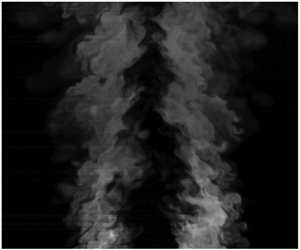Published online by Cambridge University Press: 16 August 2021

Three-scalar subgrid-scale (SGS) mixing in turbulent coaxial jets is investigated experimentally. The flow consists of a centre jet, an annulus and a co-flow. The SGS mixing process and its dependence on the velocity and length scale ratios of the annulus flow to the centre jet are investigated. For small SGS scalar variance the scalars are well mixed and the initial three-scalar mixing configuration is lost. For large SGS variance, the scalars are highly segregated with a bimodal scalar filtered joint density function (f.j.d.f.) at a range of radial locations. Two competing factors, the SGS variance and the scalar length scale, play an important role for the bimodal f.j.d.f. For the higher velocity ratio cases, the peak value of the SGS variance is higher, thereby resulting in stronger bimodality. For the lower velocity ratio cases, the wider mean SGS variance profiles and the smaller scalar length scale cause bimodal f.j.d.f.s over a wider range of physical locations. The scalar dissipation rate structures have similarities to those of mixture fraction and temperature in turbulent non-premixed/partially premixed flames. The observed SGS mixing characteristics present a challenging test for SGS mixing models as well as provides an understanding of the physics for developing improved models. The results also provide a basis for investigating multiscalar SGS mixing in turbulent reactive flows.